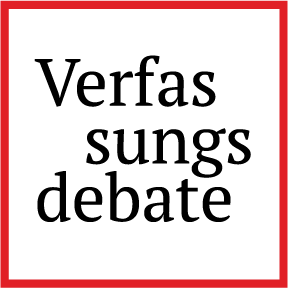Greenforcement of Intellectual Property Rights
What Role for the Fundamental Right to a Healthy Environment in IP Practice?
The current practice of enforcement of intellectual property rights (IPR) impacts the environment in many ways. The disposal and destruction of IPR infringing goods are an everyday occurrence throughout the EU, causing waste, pollution of the air and soil (depending on the method of destruction), and also waste of scarce raw materials. There is increasing recognition of the pressing need for more human and environmentally friendly alternative remedies, such as donating goods to charity, removing infringing signs or parts, or disposing of the goods outside the EEA/EU. The question is whether and to what extent the legal framework leaves room for ecologically sustainable alternatives to disposing of and destroying IPR-infringing goods.
TRIPS & sustainable alternative remedies
The framework for civil IPR enforcement within the EU is provided by the Agreement on Trade-Related Aspects of Intellectual Property Rights (TRIPS) and the IP Enforcement Directive (IPRED). Article 46 TRIPS requires member states to grant the judiciary the authority to order the disposal or destruction of goods in virtually the entire field of intellectual property. This provision, which is often misconstrued, has put the focus on the destruction of infringing goods as a commonplace remedy (see the contribution by Wolf R. Meier-Ewert in this volume). From the perspective of rights-holders, this is the most effective and deterrent remedy. However, the provision leaves leeway for national authorities to order alternative, more sustainable remedies in several aspects.
First of all, it empowers national authorities to impose certain measures, such as the disposal and destruction; it does not require national courts to take these measures in concrete cases. Other, more appropriate, effective and sustainable measures can be chosen in specific cases. This also follows from the requirement that measures are proportionate to the seriousness of the infringement and third-party interests. The principle of proportionality guides the national authorities’ choice between the remedies specified in the first sentence of Article 46 and any alternative remedies, allowing them to consider less severe measures in less serious infringement cases. The principle of proportionality further provides room for taking broader societal interests into account in the choice of remedy, such as the interest in environmental protection.
Secondly, Article 46 provides that the available remedies include the disposal or destruction, unless this would be contrary to constitutional requirements. As Gervais (2009) noted, in some countries, for example Brazil, the destruction of useful goods is unconstitutional. The provision explicitly recognizes and respects such potential constitutional obstacles to ordering the disposal and destruction of IPR-infringing goods.
Thirdly, the final sentence of Article 46 is often misinterpreted as an obligation to order the destruction of trademark-infringing goods. It provides that “[i]n regard to counterfeit trademark goods, the simple removal of the trademark unlawfully affixed shall not be sufficient, other than in exceptional cases, to permit release of the goods into the channels of commerce.” From the WTO case China – Intellectual Property Rights, it follows that this sentence must be interpreted in a more nuanced way (as explained by Meier-Ewert in his contribution to this volume). In the first place, it only applies to counterfeit goods and not otherwise infringing goods. Counterfeit goods are considered a specific category of goods: debranding them would not be sufficient to avoid the risk of infringement, because in those cases the infringing signs could easily be affixed again. This means that if the state of the debranded counterfeit goods is altered sufficiently to deter infringement, for instance by dismantling or recycling them, their release in the channels of commerce in fact would be permitted. Furthermore, with respect to goods that bear confusingly similar signs, debranding instead of their destruction would also be permitted. Finally, disposal outside the channels of commerce of debranded counterfeit goods seems permitted as well, e.g. by donation to charity.
IPR Enforcement Directive & sustainable alternative remedies
The proportionality test is also required by Article 10 IPRED, which transposes Article 46 TRIPS and provides for corrective measures that include the recall and definitive removal from the channels of commerce, or destruction, of infringing goods. As was confirmed by the Court of Justice of the European Union (CJEU) in the Perfumesco case (paras 41 and 54), under this provision, it is up to the national authorities to decide on the appropriate measure to be adopted in each individual case.
Also in this context, the proportionality test provides room for taking societal interests into account. Para 32 of the preamble to the IP Enforcement Directive states that it respects the fundamental rights and observes the principles that are recognised in particular by the EU Charter of Fundamental Rights. This means that in practice, the right to intellectual property (protected under Art. 17(2) of the Charter) must be reconciled with other fundamental rights and principles, including the right to environmental protection as enshrined in Article 37 of the Charter (for a more in-depth analysis of the scope and meaning of this provision, see Jasper Krommendijk’s previous blog post in this symposium). Due in part to the influence of the European Green Deal and the UN Sustainable Development Goals, the right to protection of the environment is set to carry more and more weight, also in IPR enforcement.
Notably, the right to environmental protection is explicitly mentioned in the preamble of the Directive on the Protection of Trade Secrets (TSD):
‘(21) In line with the principle of proportionality, measures, procedures and remedies intended to protect trade secrets should be tailored to meet the objective of a smooth-functioning internal market for research and innovation, in particular by deterring the unlawful acquisition, use and disclosure of a trade secret. Such tailoring of measures, procedures and remedies should not jeopardise or undermine fundamental rights and freedoms or the public interest, such as public safety, consumer protection, public health and environmental protection, and should be without prejudice to the mobility of workers.’ (emphasis added)
Specifically, regarding the destruction of goods, the TSD provides that destruction should be avoided if other viable options are available, such as depriving goods of their infringing quality or disposing of the goods outside the market, for example, by means of donations to charitable organisations.
Greenforcement1) of IPR: examples from the Netherlands
In the Netherlands, courts are becoming more and more reluctant to order the destruction of infringing goods. There are a number of recent judgments in which orders for destruction were rejected on the grounds of proportionality. In several cases, applying the proportionality test and weighing ‘the general interest that goods should not be destroyed unnecessarily’ resulted in more sustainable solutions, such as simply removing the infringing signs or copyright/design right infringing parts of cars and children’s bicycles. There are also cases in which courts rejected the destruction and instead ordered the relabeling of the goods or the donation of the goods to charity. But also in other member states, courts seem to have turned the corner. Given the urgent need to protect the environment and mitigate climate change, this is an encouraging development.
References
| ↑1 | This term is borrowed from a “Greenforcement”- movement in consumer law, see e.g. https://research.rug.nl/nl/activities/greenforcement-through-private-law-remedies. |
|---|



